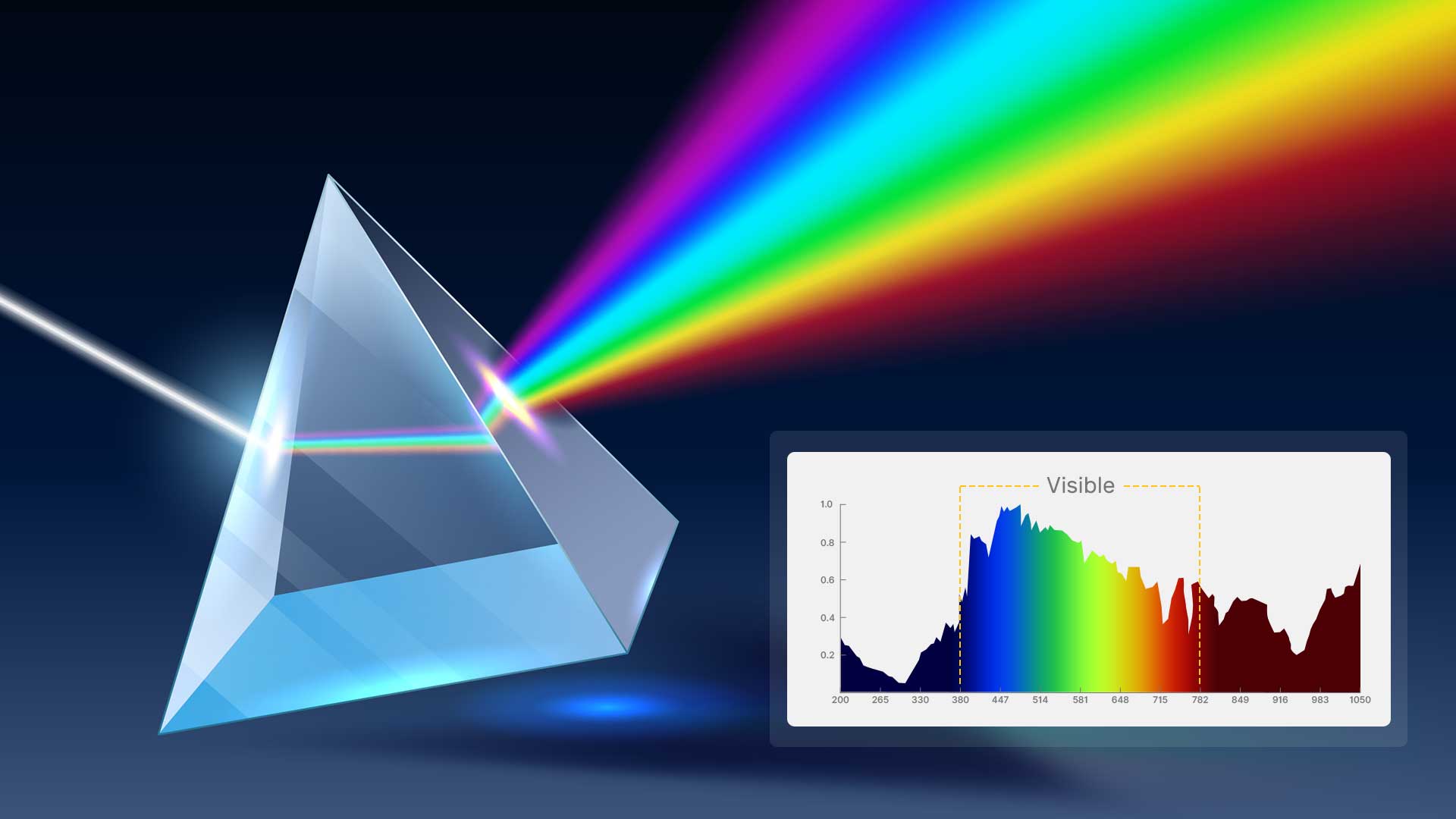LED continuous lighting is part of continuous light source which includes everything from the sun to fluorescent lights in an office or LED studio lights. It has become one of the most popular choices for photography as it does not produce a lot of heat and closely replicate the feeling of natural light with adjustable color temperature.
Types of LED continuous light
|
Type |
Feature |
Surface light source |
Point light source |
COLBOR light |
|
LED light Beads |
|
√ |
× |
N/A |
|
LED chip |
|
√ |
√ |
Small LED video light PL5; Portable RGB video light PL8R |
|
COB LED |
|
× |
√ |
Bi color COB LED light CL100; Daylight LED light CL100-M |
Key specifications that make a continuous light for photography

- Light spectrum, namely electromagnetic spectrum, describes different wavelengths of energy coming from a light source such as a LED light. Apart from the light that is visible to human eyes, there is still plenty of light that cannot be perceived by human. As an energy, light can come in diverse wavelengths, that is the lightwave spectrum.
Nanometer (nm), the measurement unit of light, represents the band of light energy or the wavelength of light. 380nm to 780nm is the visible range of light on the spectrum. Except from the visible light, there are other types of light on the electromagnetic waves spectrum such as UV-Light, Infrared, Cosmic Rays and Gamma Rays.
 - Color temperature, measured in degree of Kelvin on the scale from 1,000 to 10,000, is used to describe the appearance of a light. To be more understandable, when an object is being heat up at a certain Kelvin temperature, it radiates this certain color accordingly. The color temperature is meant for replicating the Kelvin temperature of this object. Generally speaking, continuous lighting with the color temperature range from 2000K to 6500K is well-suited for residential and commercial occasions.
- Color temperature, measured in degree of Kelvin on the scale from 1,000 to 10,000, is used to describe the appearance of a light. To be more understandable, when an object is being heat up at a certain Kelvin temperature, it radiates this certain color accordingly. The color temperature is meant for replicating the Kelvin temperature of this object. Generally speaking, continuous lighting with the color temperature range from 2000K to 6500K is well-suited for residential and commercial occasions.
Through reading the color temperature, we can learn about appearance and feeling produced by light. The color temperature is distributed in accordance with Correlated Color Temperature (CCT), which is used to measure the color appearance of light source. Unlike the chromaticity, it is defined by a single number - the proximity of how far the light source’s chromaticity coordinates is to where the blackbody locates.
 - CRI (Color Rendering Index), is “the effect of an illuminant on the color appearance of objects by conscious or subconscious comparison with their color appearance under a reference illuminant” - as defined by the International Commission on Illumination (CIE). The CRI was created for meaningful comparisons among different artificial light sources. It does not represent the color temperature of the artificial light sources such as photography continuous light, but reproduces the full colors ranges of colors with accuracy.
- CRI (Color Rendering Index), is “the effect of an illuminant on the color appearance of objects by conscious or subconscious comparison with their color appearance under a reference illuminant” - as defined by the International Commission on Illumination (CIE). The CRI was created for meaningful comparisons among different artificial light sources. It does not represent the color temperature of the artificial light sources such as photography continuous light, but reproduces the full colors ranges of colors with accuracy.
By comparing the appearance of the sample colors under ideal daylight or a standard daylight LED against the light being tested, the CRI score is calculated. A low CRI score means the light source reproduces colors of an object less accurately while the CRI at 100 means it reproduces as accurately as standard source. To guarantee the accurate reproduce colors for film production, especially skin-tone colors, a CRI at 90-95 or even more is reasonable.
However, there are some inadequacies with CRI rating.
- The color renditions perceived by human eyes can differ greatly from the imaging sensors in TVs and cameras.
- The colors that are used to determine CRI scores were over saturated, some even cannot be tolerated by TVs and cameras.
- TLCI (Television Lighting Consistency Index), is created to calculate a light through similar process of CRI test to cover up the flaws of CRI score. However, instead of human eye as the observer, it uses software to measure the color response.
Conclusion
When used with a continuous lighting, often what you see is what you get, but it gives not enough brightness when coming to photography or video making. At this moment, a professional continuous light for photography is necessary. COLBOR is intended to develop such quality LED video lights. We would strive for color temp accuracy, zero strobe, and low noise which are key impetus to this professional segment.
